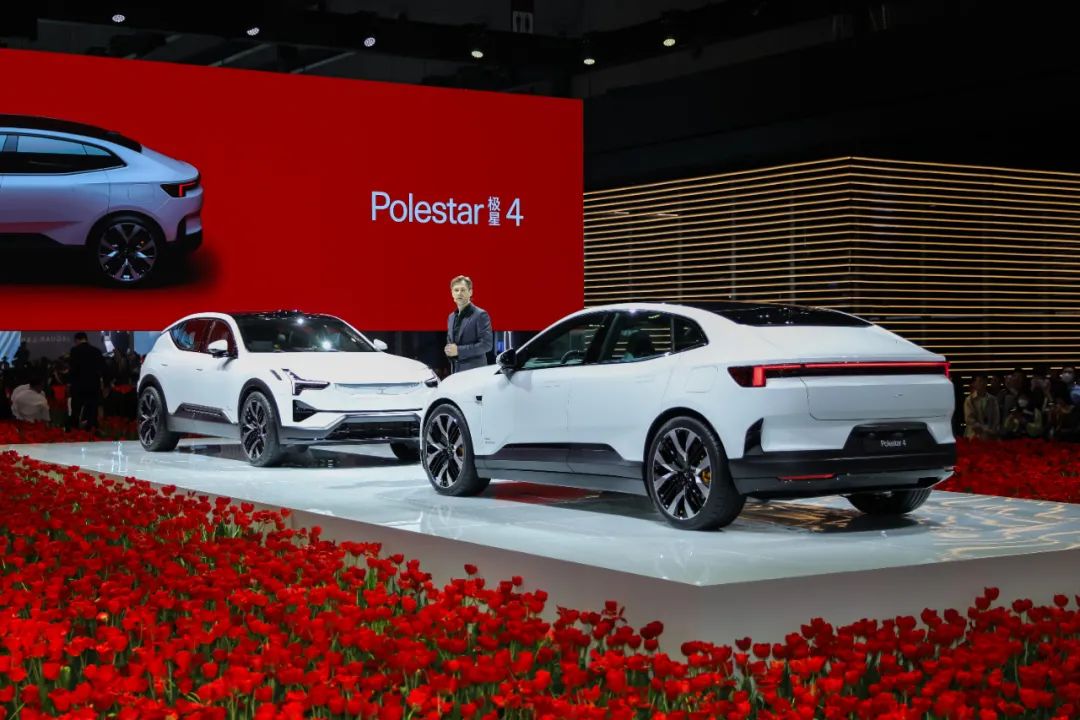
Swedish electric performance car maker Polestar launched the Polestar 4, an electric performance SUV coupe, at the Shanghai auto show this week, the second SUV in the brand’s lineup and its fastest production car to date.
Making its global debut in China, the Polestar 4 represents a new breed of SUV in its approach to both aerodynamics and space, focusing on the rear occupants’ comfort and experience, and with one of its most-notable features being the replacement of the rear window with a high-definition screen that shows a real-time feed from a roof-mounted rear camera.
“With Polestar Precept (concept car), we previewed a stunning new occupant experience by removing the rear window and pushing the rear header, which plays an integral safety role, further back. This means that now, rear occupants can have a unique experience in our SUV coupe,” said Maximilian Missoni, head of design at Polestar.
As the fastest production car the brand has developed to date, the Polestar 4 can accelerate from 0-100 kilometers per hour in just 3.8 seconds and has maximum power output is 400 kilowatt. It will come in two long-range variants, both fitted with a 102 kilowatt-hours battery, with the dual-motor model expected to have a range of 612-631 km (CLTC Standard).
The large-body SUV coupe has a 2,999-milimeter wheelbase, an overall length of 4,839 mm, width of 2,139 mm and height of 1,544 mm.
“Rather than simply modifying an existing SUV, giving it a faster roofline and as a result, compromising elements like rear headroom and comfort, we have designed Polestar 4 from the ground up as a new breed of SUV coupe,” said Thomas Ingenlath, Polestar CEO.
Polestar is one among many innovative brands showcasing their latest products at the Shanghai auto show, but what makes the design-driven brand stand out from many of its competitors is its emphasis on sustainability.
The Polestar 4 uses circular and low-carbon materials to replace traditional solutions, such as mono-materials, first presented in the Polestar electric roadster concept in 2022. They are applied to interior materials, where all layers of certain components are produced from the same base material. This allows them to be recycled more effectively and efficiently by eliminating the need for incompatible materials to be separated before recycling.
The tailored knit upholstery is a new technique for the automotive industry. First shown in the Precept concept car, the textile is made from 100 percent recycled polyester. The material and the design have been created by Polestar designers together with the Swedish School of Textiles and further developed with suppliers. It is made to fit, producing no offcuts and reduced overall waste.

The brand has also introduced measures for greater supply chain transparency, like blockchain traceability for risk materials in the batteries. A full lifecycle assessment, showing the true carbon footprint of the car, will be published alongside the Polestar 4 Product Sustainability Declaration in 2024.
Not to be outdone on the tech front, the Polestar 4 is also geared toward entertainment, connectivity and an autonomous future. It has an infotainment system powered by Android Automotive OS and the Snapdragon Cockpit Platform now utilises a 15.4-inch landscape-oriented screen.
As with all other Polestar cars, regular over-the-air updates allow for new features and improvements to be sent remotely to all vehicles, removing the need to visit a workshop to gain the latest software.
The Polestar 4 is being first launched in China, with production planned to begin at the brand’s Geely-owned production facility in Hangzhou in November this year.
A full-scale launch for other markets, including in Europe, North America and Asia Pacific, is planned for early next year — with sales and production ramping up for these markets through the course of that year, according to Polestar.
Founded in 2017 by Volvo Cars and its owner Zhejiang Geely Holding Group, Polestar went public on the NASDAQ in 2021 raising over $890 million. The six-year-old startup’s models are currently available in over 25 markets globally.
